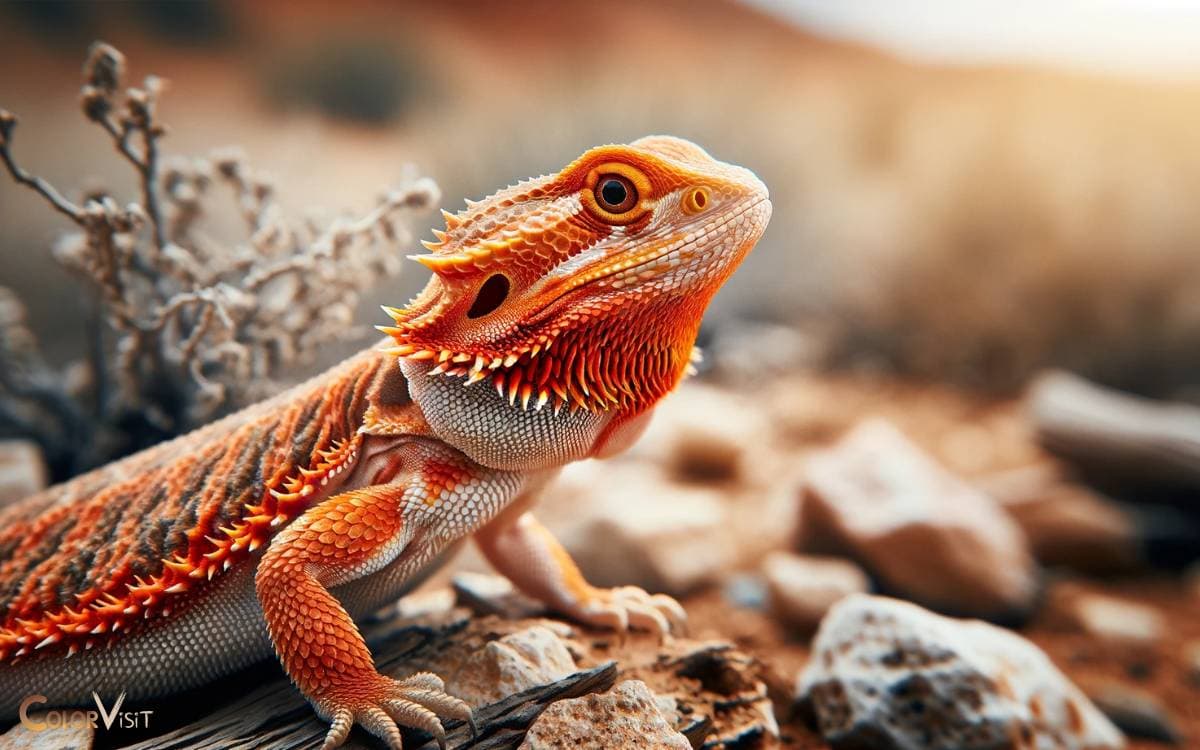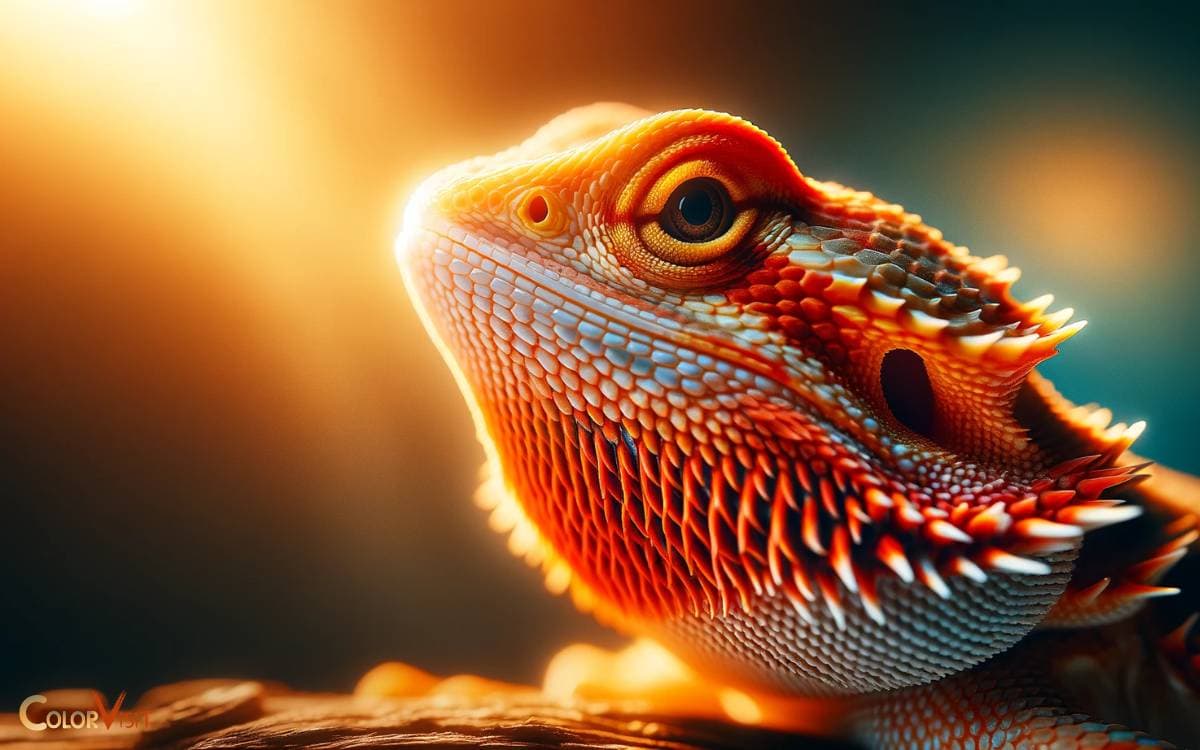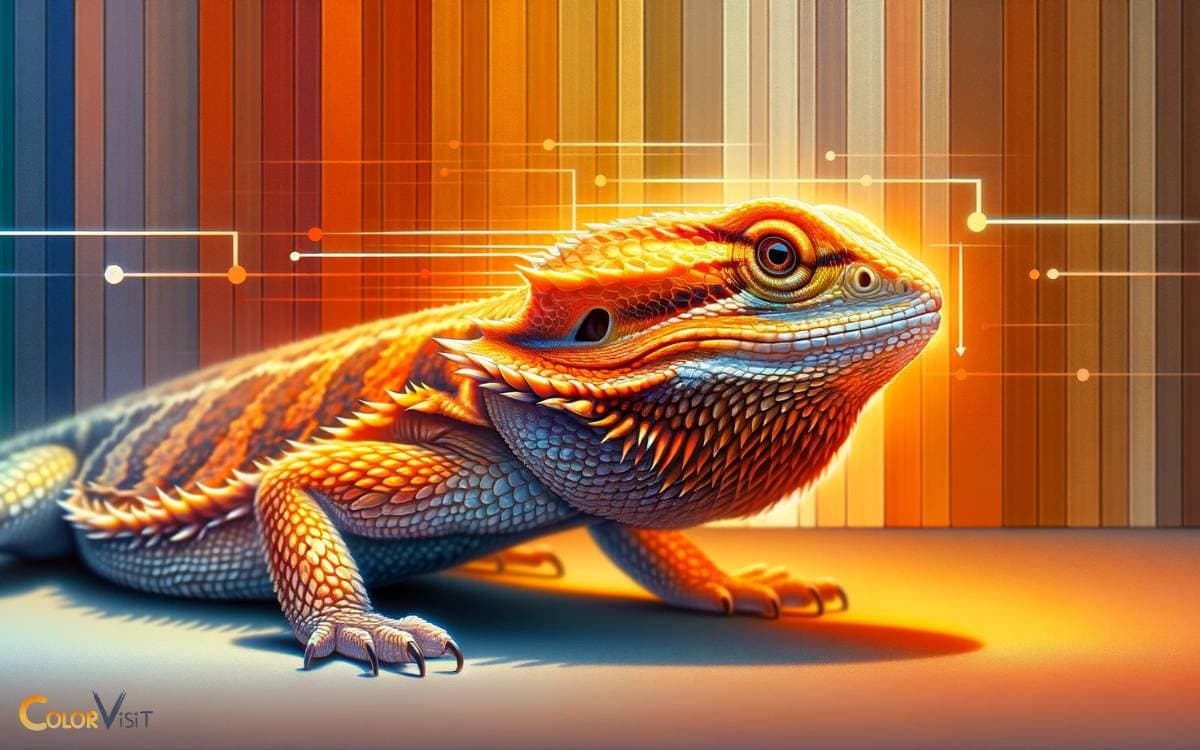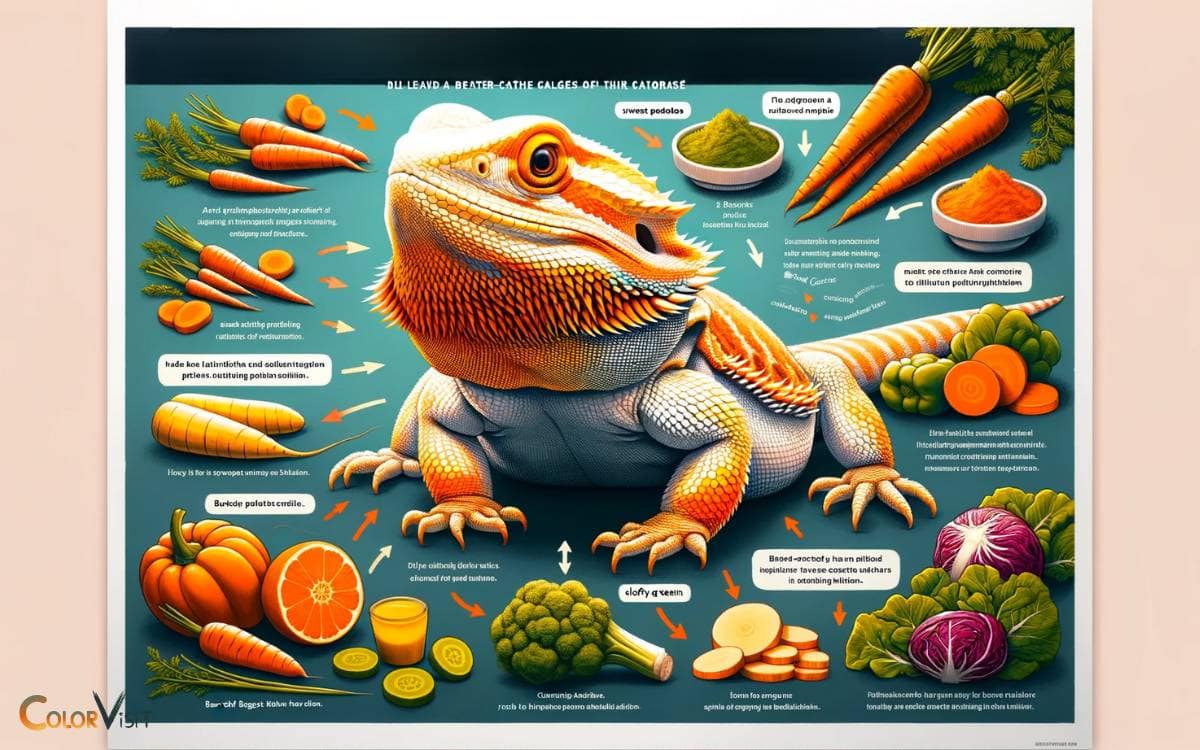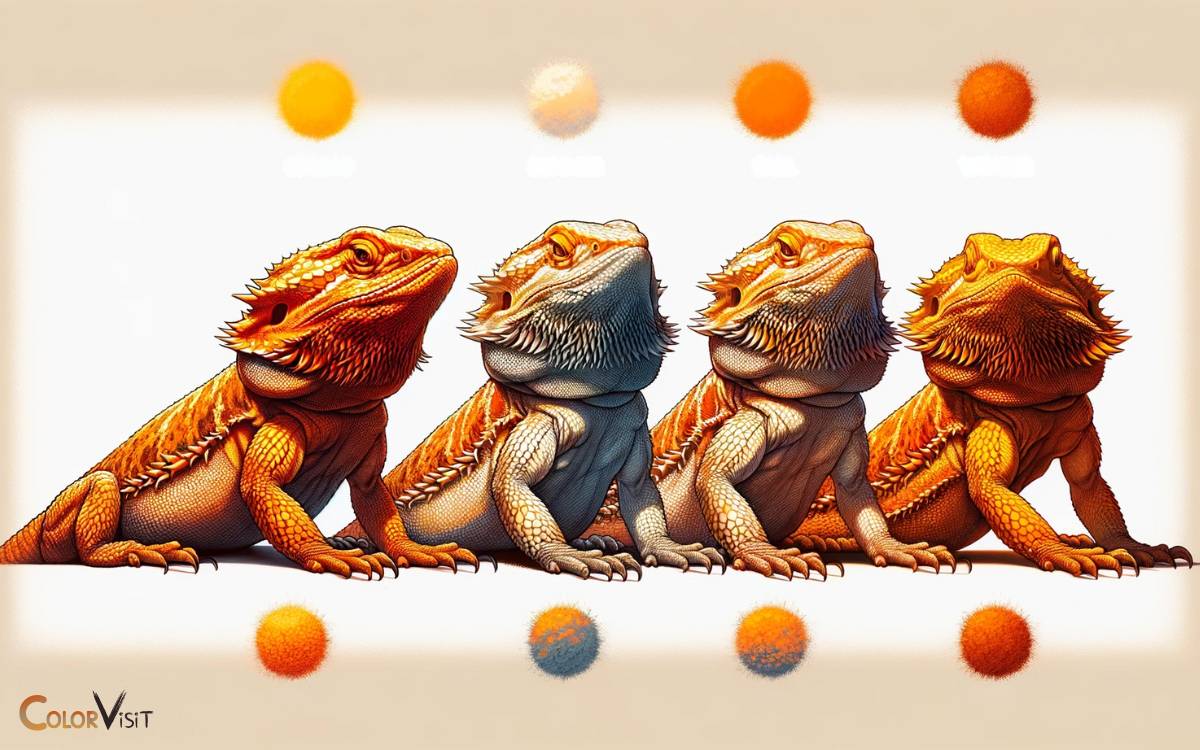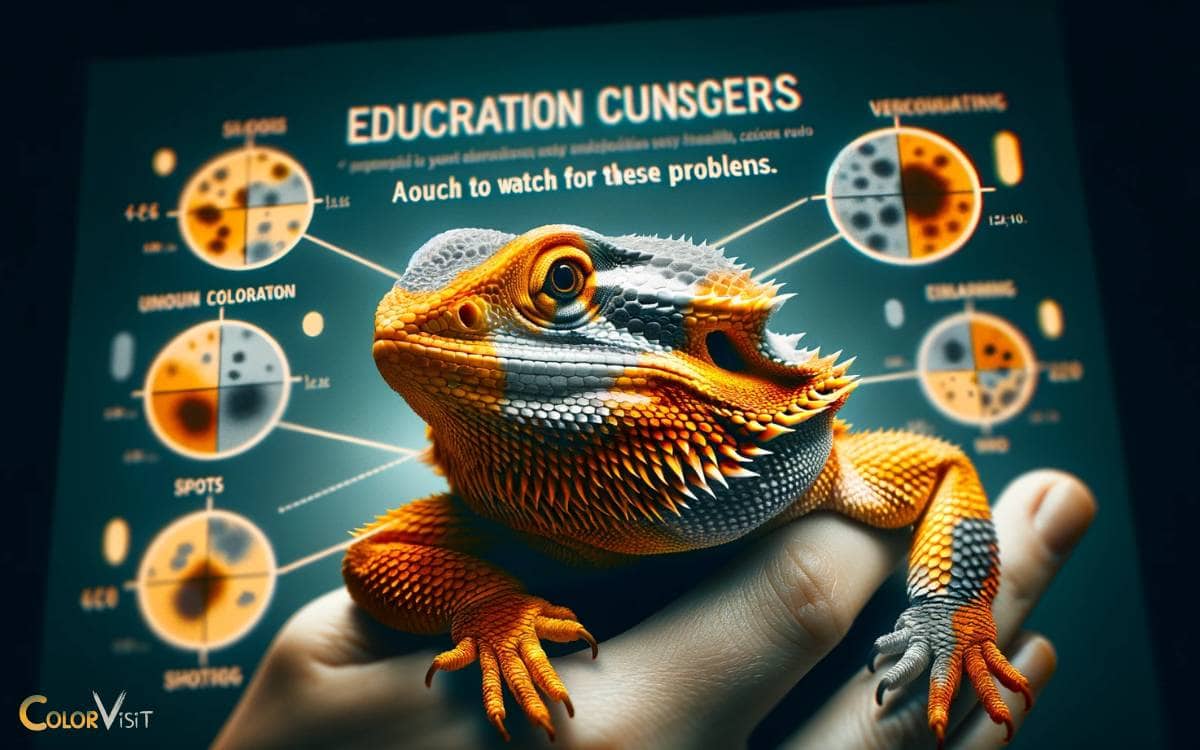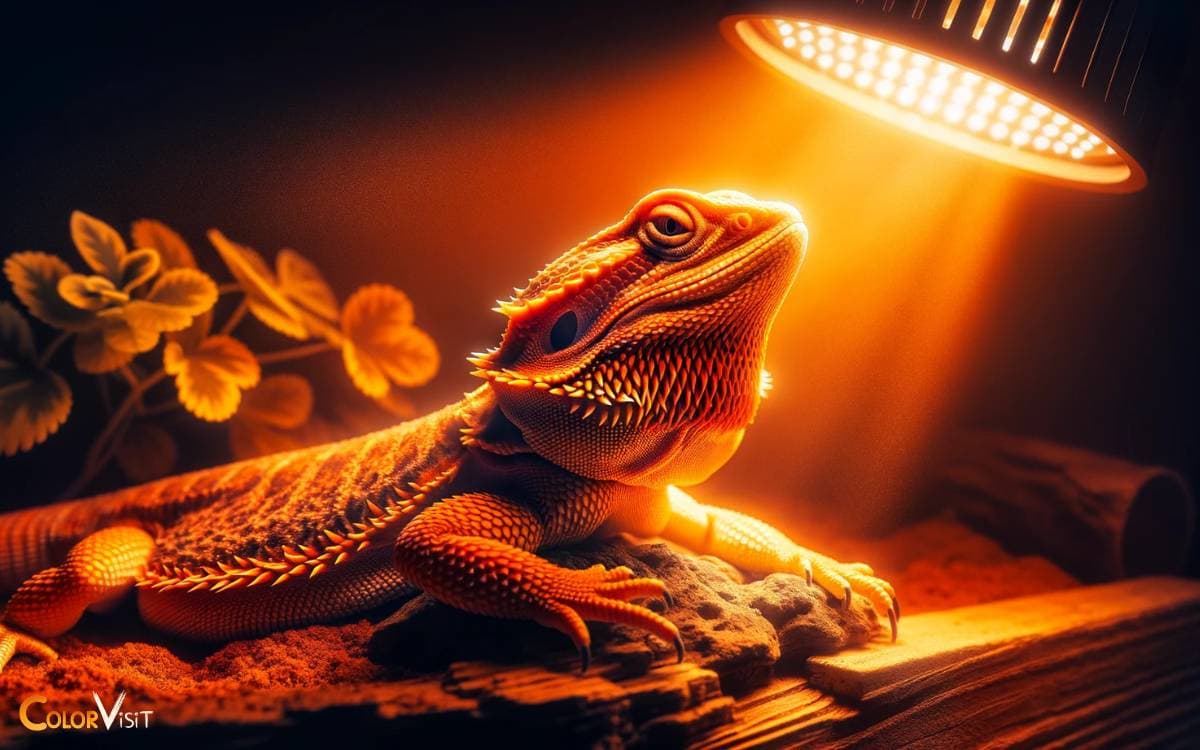Bearded Dragon Color Change Orange: Unlock the Secrets!
The fascinating phenomenon of color change in bearded dragons, especially when they turn an intriguing shade of orange, captures the attention of reptile enthusiasts worldwide.
This transformation is not merely cosmetic; it serves as a window into the bearded dragon’s health, mood, environmental satisfaction, and even dietary status.
Understanding the reasons behind this color shift is crucial for providing optimal care and ensuring the well-being of these beloved reptiles.
Key Factors Influencing Bearded Dragon Color Change to Orange:
A bearded dragon named Spike turned a vivid shade of orange after his owner adjusted his diet to include more vegetables rich in carotenoids and optimized his habitat’s lighting and temperature conditions.
Understanding the complexity behind a bearded dragon’s color change to orange requires recognizing the interconnectedness of their physical health, emotional well-being, and environmental fit.
By maintaining a balanced diet, proper habitat conditions, and routine health check-ups, owners can enjoy the vibrant hues of their bearded dragons and ensure their longevity and happiness.
Caring for a bearded dragon is a colorful journey, with their dynamic hues reflecting the quality of care they receive, reminding us of our direct impact on their health and happiness.
Key Takeaway
Understanding Color Changes
Why do bearded dragons exhibit color changes, particularly turning orange, and what does this phenomenon reveal about their physiological and environmental interactions?
This fascinating occurrence stems from a complex interplay of factors. Primarily, color variations serve as a mode of communication among these reptiles, signaling their physiological state or emotional responses to others.
Moreover, environmental conditions, including temperature and lighting, significantly influence these chromatic shifts.
Research indicates that exposure to specific wavelengths of light can trigger pigment concentration adjustments within their skin, facilitating this color change.
This adaptive mechanism not only underscores the bearded dragon’s evolutionary ingenuity but also highlights the critical role of their habitat in dictating physiological responses.
Understanding these color transformations provides valuable insights into their health, stress levels, and overall well-being.
Signs of a Healthy Glow
A vibrant, orange hue in bearded dragons often signifies optimal health and well-being, reflecting adequate exposure to necessary environmental conditions.
This chromatic expression is a result of a complex interplay between physiological health and genetic predisposition.
In the realm of herpetological studies, the coloration of bearded dragons is an area of keen interest, particularly in understanding the correlation between pigmentation and health indicators.
A healthy glow in these reptiles is not merely a visual appeal but a biomarker for their overall vitality.
Such coloration is indicative of a well-functioning metabolism, adequate nutrition, and effective stress management.
Researchers emphasize the importance of observing these color changes as part of a comprehensive health assessment.
Through meticulous observation and analysis, enthusiasts and scientists alike can gauge the health status of these fascinating creatures, ensuring their well-being and longevity.
Environmental Influences
The environmental factors surrounding bearded dragons, specifically temperature impact, lighting conditions, and stress factors, play a crucial role in their physiological response, notably in color changes to orange.
Variations in ambient temperature and exposure to different lighting spectra can directly influence melanin concentration, thereby altering the lizard’s coloration for thermoregulation or communication purposes.
Furthermore, environmental stressors, whether physical or psychological, may trigger color shifts as a stress response, reflecting an adaptive mechanism to environmental challenges.
Temperature Impact
Environmental temperature significantly influences the coloration changes in bearded dragons, with variations potentially indicating their adaptation to regulate body temperature.
This thermoregulatory behavior is critical for their survival, optimizing physiological processes such as digestion and immune function.
Recent studies have shown that bearded dragons can exhibit a range of color changes in response to environmental temperature fluctuations.
These changes are not merely cosmetic but serve a functional purpose by enhancing their ability to absorb or reflect heat.
For instance, a darker coloration can be observed when temperatures are lower, facilitating heat absorption, while lighter colors may prevail in hotter conditions to reflect solar radiation.
This adaptive mechanism underscores the intricate relationship between environmental factors and physiological responses in ectothermic organisms, offering insights into evolutionary adaptations and potential implications for species conservation under changing climatic conditions.
Lighting Conditions
Beyond temperature, lighting conditions also play a crucial role in influencing the color changes observed in bearded dragons, reflecting another layer of environmental adaptation.
Specifically, the spectrum and intensity of light can significantly impact the melanophore activity in their skin, leading to variations in coloration.
Bearded dragons exposed to an enriched ultraviolet (UV) spectrum, particularly UVB, often exhibit more vibrant coloration.
This is not merely an aesthetic change but serves as a physiological response to optimize the absorption of UV rays, crucial for synthesizing vitamin D3, thereby enhancing calcium metabolism.
Scientifically, it’s understood that the photoperiod—the duration of light and dark exposure—also modulates these chromatic shifts.
Adequately balanced lighting conditions, therefore, not only support physiological health but may also accentuate the bearded dragon’s color intensity, underscoring the intricate relationship between environmental factors and reptilian biology.
Stress Factors
In addition to lighting and temperature conditions, stress factors significantly influence the color changes observed in bearded dragons, acting as a critical environmental determinant in their physiological and chromatic adaptations.
These stressors can manifest in various forms, each with the potential to alter the bearded dragon’s coloration as part of a complex response mechanism aimed at coping with environmental challenges.
Key stress factors include:
- Overcrowding: High density of individuals in a confined space can lead to competition for resources, increasing stress levels.
- Inadequate hiding spots: Lack of secure and comfortable hiding places can elevate stress, impacting coloration.
- Aggressive tank mates: The presence of aggressive or incompatible species can induce stress, leading to color changes as a form of camouflage or stress signal.
Understanding these factors is crucial for maintaining optimal conditions conducive to the health and well-being of bearded dragons.
Mood and Behavior Indicators
Bearded dragons exhibit a range of color changes in response to their emotional state, with orange hues often signaling specific moods or stress levels.
These chromatic shifts serve as non-verbal cues, indicating the animal’s internal state, whether it be agitation, fear, or contentment.
Analyzing these color patterns, particularly the manifestation of stress signals, provides insight into the nuanced behavior and welfare of these reptiles.
Emotional Color Shifts
One may observe that bearded dragons can experience shifts in their skin coloration, reflecting their emotional state and behavioral intentions with remarkable precision.
These chromatic changes serve as a sophisticated non-verbal communication mechanism, signaling various emotional and physiological conditions to observers and conspecifics.
Understanding these color shifts provides invaluable insights into the reptiles’ wellbeing and social interactions.
- Excitement or Contentment: A brighter, more vivid coloration, often an enhanced orange hue, indicates a state of alertness or pleasure.
- Warmth Absorption: Darker colors, particularly when basking, suggest an attempt to maximize heat absorption, a critical aspect of thermoregulation.
- Social Signaling: Subtle color variations can also serve as signals during social interactions, delineating hierarchy, territoriality, or readiness to mate.
Analyzing these color shifts through a scientific lens enhances our grasp of bearded dragon behavior, fostering more informed and innovative care practices.
Stress Signals Display
Understanding the nuances of color changes in bearded dragons for positive emotions and thermoregulatory needs naturally leads to the exploration of their coloration as indicators of stress and discomfort.
Bearded dragons, renowned for their chromatic signaling, often exhibit darker, more muted colorations under stress.
This physiological response serves as a non-verbal communication mechanism, signaling unease or the need for solitude.
Scientific analysis suggests that such color shifts may be attributed to a redistribution of melanin, aimed at either a thermal response or a camouflage tactic against perceived threats.
Innovative research into these coloration patterns not only enhances our understanding of reptilian stress responses but also pioneers new pathways in herpetological welfare, emphasizing the significance of environmental and emotional factors in the husbandry of these complex creatures.
The Role of Diet
The dietary habits of bearded dragons significantly influence the vibrancy and variation in their coloration, including the manifestation of orange hues.
The intake of specific nutrients can either enhance or diminish the intensity and prevalence of orange pigmentation in these reptiles.
Through meticulous research and observation, it has been discerned that certain dietary components play a pivotal role in color expression.
- Carotenoids: Found in foods like sweet potatoes and carrots, these compounds are essential for the development of vibrant orange tones.
- Hydration: Adequate water intake is crucial for maintaining the skin’s health and luster, thereby affecting color saturation.
- Protein Sources: High-quality protein from insects such as crickets and mealworms supports overall health, influencing color vibrancy indirectly.
Understanding these nutritional aspects allows for optimized care strategies, promoting not only the health but also the aesthetic appeal of bearded dragons.
Seasonal Variations
Beyond dietary influences, seasonal variations also significantly impact the color dynamics of bearded dragons, including the intensity and appearance of orange hues.
The interplay between ambient temperature, photoperiod, and UV exposure during different seasons orchestrates a complex color modulation in these reptiles, aligning with their physiological needs and environmental interactions.
| Season | Impact on Coloration |
|---|---|
| Spring | Increased brightness, vivid orange due to enhanced UV exposure and active metabolism |
| Summer | Slightly dulled hues, high temperatures may reduce pigmentation intensity |
| Autumn | Gradual increase in orange saturation, preparing for brumation |
| Winter | Diminished color vibrancy, lower metabolism and reduced UV exposure |
This cyclical pattern underscores the adaptive significance of color change, serving not only for social signaling but also for thermoregulation and environmental camouflage.
Health Concerns to Watch
While observing the vibrant hues of bearded dragons, it is imperative to remain vigilant for color changes that may signal underlying health concerns.
A sudden or gradual shift in coloration, particularly to an orange hue, might not always be a benign or aesthetic variation. It is crucial to discern these changes through a scientific lens, seeking to understand the implications for the reptile’s health.
- Stress Indicators: Abrupt color change can be a stress response, influenced by environmental factors or health issues.
- Nutritional Deficiencies: An improper diet may manifest through skin coloration changes, indicating a lack of essential nutrients.
- Potential Illness: Persistent color changes could be symptomatic of underlying diseases, necessitating a thorough veterinary examination.
Understanding these signs is essential for proactive health management and ensuring the well-being of bearded dragons.
Enhancing Natural Coloration
Acknowledging the health concerns associated with color changes in bearded dragons paves the way for exploring methods to safely enhance their natural coloration.
Delving into the scientific nuances of reptilian pigmentation, one can identify dietary supplements and environmental adjustments as primary avenues for augmenting color vibrancy.
Specifically, the incorporation of carotenoid-rich foods into the bearded dragon’s diet has been shown to intensify orange and red hues naturally present in their scales.
Concurrently, optimizing UVB light exposure within their habitat not only supports their physiological health but also plays a crucial role in pigment development and maintenance.
This approach, grounded in the principles of herpetological care and color theory, offers a holistic strategy for achieving enhanced natural coloration without compromising the well-being of these captivating reptiles.
Interpreting Color Patterns
Understanding the color patterns of bearded dragons necessitates a comprehensive analysis of their genetic makeup and environmental influences, which collectively determine the spectrum of hues exhibited by these reptiles.
The interpretation of these patterns is critical for breeders, enthusiasts, and researchers aiming to understand the intricacies of bearded dragon coloration.
To achieve this understanding, several factors must be considered:
- Genetic Variability: The genetic predisposition of each bearded dragon plays a pivotal role in the development of its coloration, influencing potential hues and patterns.
- Environmental Factors: Temperature, diet, and stress levels can significantly impact color intensity and changes.
- Age and Health: As bearded dragons age or experience changes in health, their coloration can also shift, serving as an indicator of their well-being.
Conclusion
The chromatic shifts observed in bearded dragons, particularly the orange hue transition, serve as a rich tapestry that narrates the physiological and environmental symphony at play.
These color variations, emblematic of health, mood, and adaptation, underscore the intricate relationship between these reptiles and their surroundings.
As caretakers interpret these vibrant patterns, they engage in a dialogue with nature, fostering a deeper understanding and connection with their scaly companions.
This dynamic interplay of color not only enhances the aesthetic appeal of bearded dragons but also acts as a vital indicator of their well-being and harmony with the environment.
